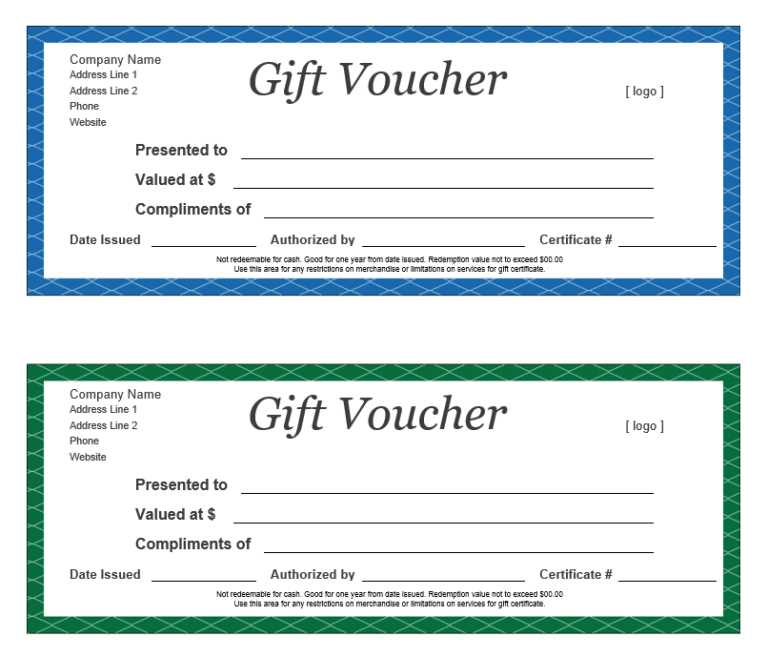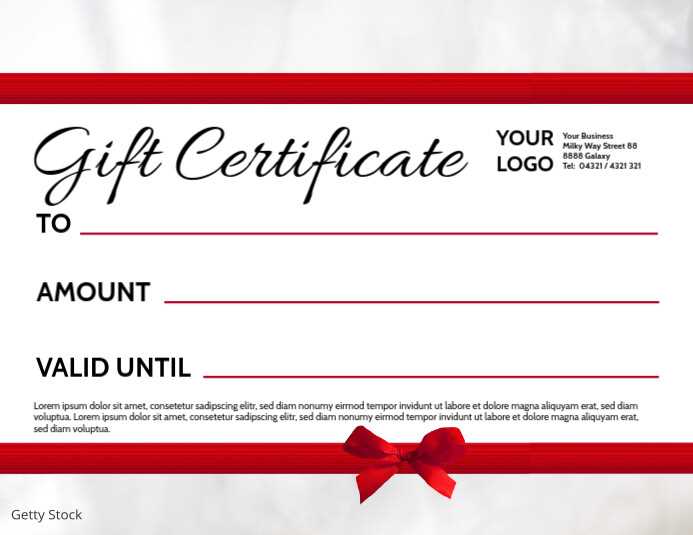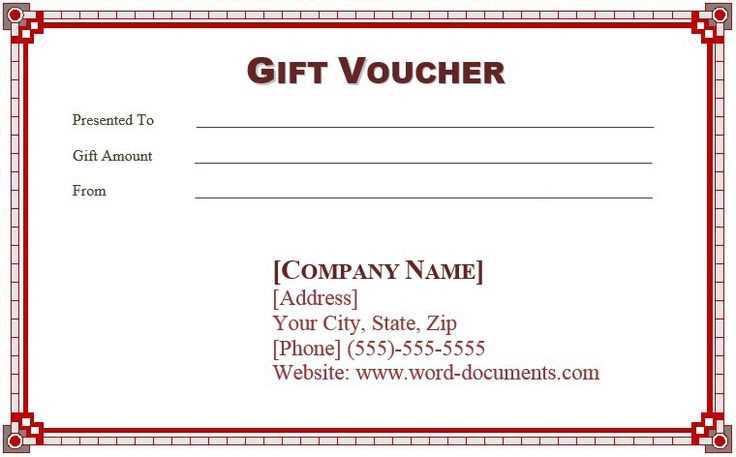Gift voucher letter template

Creating a well-written gift voucher letter ensures that the recipient understands the value and use of the voucher clearly. The tone should be warm and personalized, adding a special touch to the gesture. Include important details like the voucher amount, expiration date, and any terms or conditions that may apply.
Start with a friendly greeting, such as addressing the recipient by name, to make the letter feel more personal. Follow with a brief mention of the occasion or reason for the gift, whether it’s a birthday, anniversary, or a simple gesture of appreciation.
Clearly state the voucher’s details, including the store or service it can be used for, the value of the voucher, and any restrictions. Make sure the recipient knows exactly how to redeem it and any applicable deadlines or expiration dates. This helps avoid confusion and ensures the gift is used properly.
Conclude the letter with an encouraging note, expressing your hope that the recipient enjoys their gift. Offering a thank you or well-wishes at the end reinforces the positive tone of the message.
Gift Voucher Letter Template: A Practical Guide
Crafting a gift voucher letter involves clear, concise communication. The letter should include essential details like the recipient’s name, the value of the gift, and any terms or conditions. Below is a simple yet effective template to follow.
Key Elements of a Gift Voucher Letter
Make sure your letter contains the following components:
- Recipient’s Name: Ensure the name is correctly spelled to avoid confusion.
- Voucher Details: State the value and what it can be used for.
- Expiry Date: Include the voucher’s expiration date to avoid misunderstandings.
- Terms and Conditions: Mention any restrictions, such as limited use or non-transferability.
- Contact Information: Provide a way to reach the issuer for further inquiries.
Sample Gift Voucher Letter
Here is a straightforward example to guide you:
| Section | Details |
|---|---|
| Dear [Recipient’s Name], | Your voucher is ready to be used. We are pleased to offer you a [amount] gift voucher. |
| Voucher Value | [amount] (valid for [service/product]) |
| Expiry Date | [expiry date] |
| Terms & Conditions | This voucher is valid for a single transaction and cannot be combined with other offers. It is non-refundable. |
| Contact Information | For inquiries, contact us at [email/phone]. |
This format helps ensure that all relevant details are included, preventing confusion or issues when the voucher is used. Customize it as needed for different occasions or businesses.
Choosing the Right Tone for Your Letter
Keep your tone friendly and sincere. A gift voucher letter should feel personal, showing appreciation for the recipient without being overly formal. Aim for warmth and a welcoming attitude, while maintaining professionalism.
Be Mindful of Your Relationship with the Recipient
If you know the recipient well, a casual, conversational tone is appropriate. For acquaintances or formal business settings, opt for a polite yet approachable style, avoiding overly stiff language. A balance between respect and warmth works best.
Adapt the Language to the Occasion
Consider the purpose of the gift. If it’s for a special occasion, such as a birthday or holiday, incorporate excitement into your words. For business-related vouchers, keep the tone courteous and appreciative, focusing on the value of the gift in the context of the recipient’s needs or interests.
Structuring Your Gift Voucher Letter
Begin with a clear and concise subject line. Make sure it reflects the value of the gift voucher and is inviting. The first sentence should immediately convey the purpose of the letter, stating that the recipient is receiving a gift voucher. Include details like the amount or service covered by the voucher right away to avoid confusion.
Opening Lines
Start with a personal greeting. Mention the recipient’s name to create a sense of individuality. Express genuine enthusiasm for providing the gift and highlight the thought behind it. A warm, friendly tone will set the right atmosphere for the letter.
Details of the Voucher

- State the value or specific service the voucher covers.
- Provide any restrictions or expiration dates, clearly outlining the terms of use.
- If applicable, mention how the recipient can redeem the voucher and where it can be used.
Ensure the letter stays concise while covering all necessary details. Avoid over-explaining, as this can distract from the core message.
Closing Remarks
Wrap up the letter by offering assistance if needed. Invite the recipient to reach out with any questions. End on a positive note, reinforcing your excitement about the gift. A simple closing like “Enjoy your gift!” will leave a lasting impression.
Personalizing the Message for the Recipient
Begin with addressing the recipient by name. This immediately makes the letter feel more personal and thoughtful. Instead of generic phrases, focus on specific details that highlight your relationship or their preferences. For example, mentioning an event they recently enjoyed or a shared experience shows that you’ve put thought into the gift.
Keep the tone warm and sincere. Instead of just stating “Happy Birthday,” add something like, “I hope this gift brings as much joy as the memories we’ve made together.” This approach creates a deeper connection with the recipient.
Incorporate any inside jokes or references that are unique to your relationship. These small touches remind the person of your bond and make the voucher feel even more special.
End the message with a call to action that fits the occasion. For a birthday, it might be, “I can’t wait to see what you choose with this gift!” For a holiday, something like “Enjoy treating yourself to something fun!” keeps the message light and positive.
Including Necessary Terms and Conditions
Clearly define the terms of use for the gift voucher. State any restrictions on the voucher’s validity, such as expiration dates, specific locations, or eligible products or services. Mention whether the voucher is transferable or non-transferable, and if any additional fees apply when redeeming it.
Specify the redemption process to avoid confusion. Include how customers can redeem the voucher, whether online or in-store, and if they need to present any proof of purchase. Clarify any minimum spending requirements or other conditions that may limit its use.
Explain refund and return policies associated with the voucher. If the voucher is partially redeemed, indicate whether the remaining balance is refundable or can be used for future purchases. If the voucher is used for a returned item, outline whether it will be refunded or replaced with a new voucher.
State any legal disclaimers regarding the voucher’s use. For example, mention that the business is not responsible for lost or stolen vouchers and outline any limitations in liability. Ensure customers understand that the voucher holds no cash value.
Lastly, include an expiration clause to make it clear when the voucher will no longer be valid. Include a reminder to use the voucher before it expires, and indicate whether the expiration date can be extended under certain circumstances.
Designing the Layout for Easy Readability

Prioritize clear font choices. Use fonts like Arial or Helvetica for their readability. Avoid fancy or hard-to-read styles. Keep font size at least 12-14px for body text to ensure comfort during reading.
Structure the content into digestible sections. Use headers to break the text into smaller chunks, and include bullet points or numbered lists where applicable. This helps readers quickly scan and absorb key information.
Leave ample white space between sections and paragraphs. This prevents the page from feeling cluttered, allowing the eyes to rest and focus on the content more easily. Aim for sufficient margins and padding around the text.
Utilize contrasting colors for text and background. Dark text on a light background is easier on the eyes, while light text on a dark background can work for short pieces, such as quotes or callouts.
Ensure the layout is mobile-friendly. Many readers will access the voucher via their smartphones. Use responsive design principles to adjust the layout according to different screen sizes.
Test the design with different users to spot any readability issues. A fresh perspective can often highlight areas that need refinement, helping to optimize the overall user experience.
Adding Optional Extras: Additional Messages or Instructions
Include personalized messages or specific instructions to enhance the recipient’s experience. A few well-chosen words can make the voucher feel more thoughtful. For example, add a brief note expressing gratitude or excitement about the recipient’s upcoming experience. Keep it concise, ensuring it complements the purpose of the voucher without overwhelming the recipient.
When adding special instructions, be clear and direct. For example, you can specify how to redeem the voucher or outline any specific terms that apply. This helps avoid confusion and ensures that the voucher is used correctly. If there are time limitations or any required preparations, include this information in a simple, straightforward manner.
Consider the tone of the message to match the occasion–whether it’s playful for a birthday or more formal for a corporate gift. Tailoring the wording to the recipient’s preferences adds a personal touch, making the voucher feel more unique and memorable.